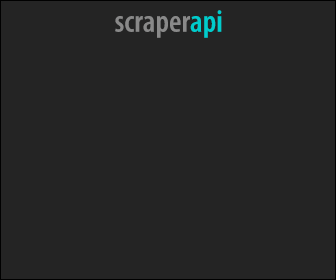How Poker Players Use Tech Tools to Analyze, Improve, and Win in 2025
Last updated: Dec 24, 2025
Poker has always rewarded sharp minds. Yet, today’s winners aren’t just relying on their knowledge and instinct, but on tech as well. Treating the game like science, serious players now use software to track stats and break down complex hands. That is how tools like PokerTracker, Hold’em Manager, and GTO solvers found their way to online casinos, in some form even to beginner friendly poker platforms, analyzing every move, exposing leaks, and sharpening strategies. The use of the tools gives both beginners and professionals a real edge. However, the line between a hobbyist and a pro often comes down to knowing how to use the data available. Because to win in poker means to improve at all times. And nowadays, the improvement is measured, reviewed, and constantly optimized.
The Shift from Instinct to Data
In the past, poker was a game of feeling - knowing when someone was bluffing, reading body language, trusting your gut. But as online poker took over, instinct alone stopped being enough. With thousands of hands played digitally and every action recorded, the game evolved. Players began to realize they could spot and classify patterns, calculate tendencies, and eliminate guesswork. It wasn’t about emotion anymore. It was about numbers.
This shift from instinct to data changed everything. Those who adapted started winning more consistently. Those who didn’t fell behind. What used to be considered cheating by intuition is now proven through statistics. Tech tools emerged not as shortcuts, but as essential instruments for learning and refining strategy. Even beginner-friendly poker platforms couldn’t ignore the impact. The modern poker mindset is clear: if you’re not tracking, studying, and adjusting, you’re not serious. Data didn’t replace skill - it just revealed what skill really looks like.
Inside the Software
Poker software like PokerTracker and Hold’em Manager changed the way players understand the game. These tools collect every hand you play and break down your performance into hard numbers - how often you raise, how loose or tight you play, how aggressive you are on different streets. Instead of guessing what went wrong after a bad session, players can review specific hands, spot patterns in their decision-making, and identify leaks they might not even know exist.
Hold’em Manager, for instance, gives players a Heads-Up Display (HUD) that shows real-time stats on opponents - how often they fold to a 3-bet, or how frequently they bluff the river. This may seem technical, but it’s a way to see what type of player you’re up against and enables you to adjust accordingly. Over time, this data builds a clearer picture of both your habits and your rivals’.
GTO (Game Theory Optimal) solvers go even a step further. They simulate perfect poker decisions in every situation, based on mathematical optimization and balance. Advanced players use solvers off the table to study tough spots, comparing their choices to the solver’s output. The goal isn’t to play like a robot, but to understand what the best move should be - and why. That is how pros close the skill gap.
Platforms’ Stance: Friend or Foe
As poker software grew more powerful, it raised an uncomfortable question: how much tech is too much? While tools like HUDs and solvers help players improve, not every platform welcomes them. Some sites, especially those catering to casual users, have moved to restrict or outright ban third-party tracking tools. Some of them have even taken a firm stance against real-time assistance, promoting a more “pure” version of the game where instincts matter more than analytics.
On the other hand, there are platforms that allow HUDs and extensive hand tracking, especially in their regular cash games. They argue that as long as players are using software responsibly - studying off-table rather than receiving real-time advice - there’s no harm. After all, leveraging technology is one of the most effective ways to improve success and productivity, even in a game built on unpredictability.
This divide creates a very different experience depending on where you play. For professionals and serious grinders, sites that allow data tools provide a training ground for constant growth. For beginners, more restrictive platforms level the playing field. Either way, understanding a platform’s policy on software is now as important as understanding the rules of the game itself.
Self-Improvement, Poker Style
Even on platforms that block real-time tools, serious players still rely on software - just not during the game. The real work happens off the table. After a session, players load their hand histories into PokerTracker or Hold’em Manager and start digging. They look for missed value bets, unnecessary bluffs, and situations where their decisions consistently lose money. This isn’t guesswork. It’s targeted self-improvement based on real data.
GTO solvers also play a big role here. Players pick difficult hands and run simulations to see how the “optimal” strategy would have played it. This isn’t about memorizing moves. It’s about understanding why certain decisions work in specific contexts. Over time, this process builds sharper instincts rooted in solid logic.
This study-first approach mirrors what athletes do. They watch footage, break down performance, and fix weak spots. In poker, this means fewer costly mistakes and smarter long-term decisions. The goal isn’t perfection. It’s progress.
Final Thoughts
Poker’s no longer just about who can bluff best or read a nervous twitch. It’s about who’s willing to put in the work when no one’s watching. The real edge comes from the hours spent reviewing hands, testing ideas, and challenging your own assumptions. So, although tech doesn’t guarantee wins, it does expose the truth behind every decision. That’s what separates luck from progress. For players serious about growth, the tools are there. The only question is: are you using them, or hoping the river goes your way?

